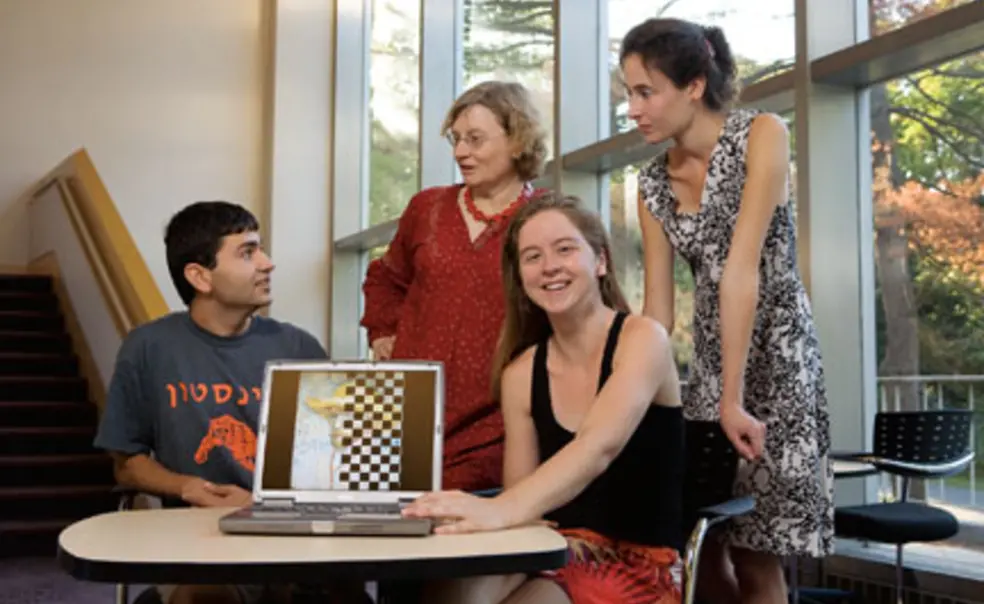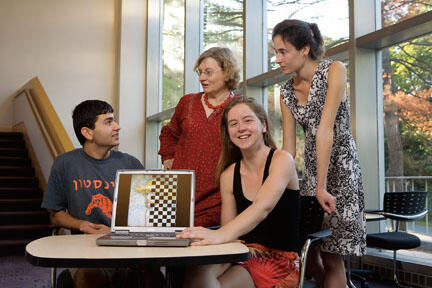Fake vs. real: Analyzing artwork with a set of mathematical tools
Once a week Shannon Hughes heads into New York to spend the day at the Museum of Modern Art, where she analyzes digital images of masterpieces and discusses how electronic tools could give art conservators new insight into an artist’s style and evolution.
Hughes is not an art history student; she’s a postdoc with Princeton’s Council on Science and Technology who recently finished her Ph.D. in electrical engineering. She is part of a team of Princeton scientists who use digital-image processing to analyze the content of paintings by dissecting brushstrokes — an emerging field at the intersection of science and art.
Hughes — along with her thesis adviser, mathematics professor Ingrid Daubechies, and Eugene Brevdo, a doctoral student in electrical engineering — attended a first-of-its-kind conference in May at the van Gogh Museum in Amsterdam that brought together art historians and three teams of scientists to demonstrate the uses of
digital-image processing to the art world. The challenge was to identify brushstroke patterns in authentic van Gogh paintings that are absent in works by other artists.
The teams received data from high-resolution scans of 101 paintings. Of these, 82 consistently have been attributed to van Gogh; six are not van Goghs but have a similar style; and the origin of 13 has been questioned by conservators. The Princeton team studied 76 of the paintings for which art historians were fairly certain of the origins. The Princeton group’s analysis correctly identified 82 percent of the paintings. The teams presented their results at the conference and published a paper in IEEE Signal Processing Magazine in July.
When the PBS program Nova heard about the conference, it created a contest for the three teams — giving them a week to determine which of six images of
van Gogh paintings was a fake. Each team correctly identified the copy, a Nova-
commissioned duplicate. Nova’s program on the research aired in July.
By developing software programs to analyze brushstrokes, the Princeton team created a statistical portrait of van Gogh’s style using wavelets — a mathematical function that decomposes the image into layers and different types of details. The forgeries and copies, they determined, had more tiny wavelets in the image, says Hughes, which “we think are tiny fluctuations and wobbles. ... You can imagine that if someone is painting really slowly trying to copy another work, they are hesitating a little bit.”
Wavelet technology also might help art historians date artwork and identify what the artist did beneath the top painted layer — as well as help art experts figure out “what the artist was thinking and what the artist was doing and why they were doing it,” says Hughes. But Daubechies stressed that “in no way does our analysis replace art historians. We are adding tools to their toolbox.”













No responses yet